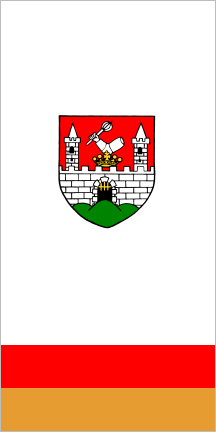 zachary harden
zachary harden
Keywords: hungary | veszprem | csesznek |
Links: FOTW homepage | search | disclaimer and copyright | write us | mirrors

Last modified: 2023-06-03 by  zachary harden
zachary harden
Keywords: hungary | veszprem | csesznek |
Links: FOTW homepage |
search |
disclaimer and copyright |
write us |
mirrors

image by István Molnár, 21 May 2003
See also:
Csesznek is a village in Veszprém county in Hungary near to
Town of Zirc (15 km north) in the
Bakony Mountains. The village has got 562 inhabitants
(2001census), nearly all of them are Hungarian. Neighbouring
settlements are Bakonyoszlop, Bakonyszentkirály,
Porva, Borzavár villages and Zirc
town.
From <www.vpmegye.hu>:
"The village has existed since the first half of the l3th
century. Its castle was probably built after the years of the
Mongol invasion of Hungary in 1241-42. The history of the castle
closely correlate with that of the one-time noble landed gentry
families. It had several owners through the history; it was also
in Turkish hands for a couple of years. It had an important role
in Rákóczi's war of independence and was unsuccessfully
besieged several times. In the castle there is a memorial of the
poet and gallant warrior of the marches, Wathay Ferenc, whose
father was captain of the castle for a long time.
In the 18-l9th centuries the village had about l000 inhabitants;
both Catholics and Protestants. A church was built by the
Catholics in which you can find the oldest bell of the Bakony. At
the beginning of the l8th century the castle was transformed into
a baroque palace by the Esterházy family, but from the end of
that century it was uninhabited and given over to destruction.
Due to the lack of work most people - especially the young - have
moved to other places; but in the first half of the 20th century
it was a popular holiday resort. In 1992 the last original
peasant house was reconstructed and an exhibition of local
history was opened. Not only Csesznek, but also its surroundings
are worth visiting; the mountains of Bakony, the Abbey and
Arboretum of Zirc, the neighbouring Lake Balaton are a great
attraction."
In 1910 Csesznek was a village in the Zirc district of Veszprém
County. Number of its inhabitants in 1910: 890; 885 (99,4%)
Hungarian and 5 (0,6%) German by mother tongue, 510 (57,3%) Roman
Catholic and 245 (27,5%) Calvinist, 26 (2,9%) Jew and 9 (1,0%)
Lutheran by religion.
Sources: Photo
taken by me at the Mayor's Office.
István Molnár, 21 May 2003